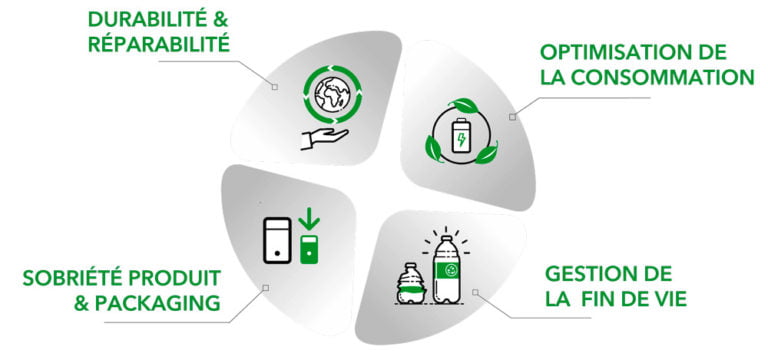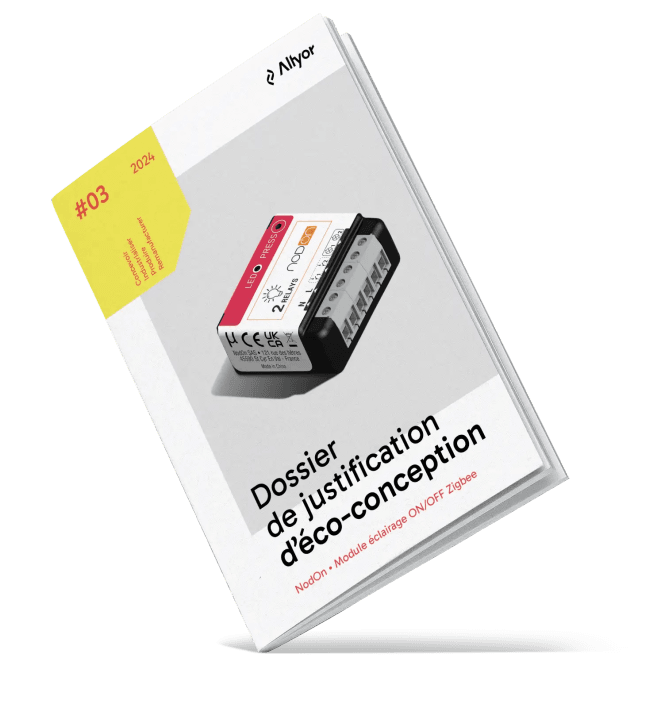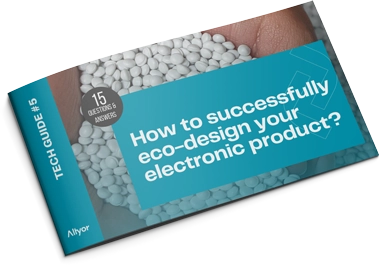Design for Tomorrow, our eco-responsible approach
Altyor, eco-design specialist
Rational design for responsible manufacturing
Our role as an industrial company requires us to think differently and to mobilize our customers on the near and distant environmental impact of each product and activity. To this end, Altyor has introduced an eco-responsible approach to controlling and reducing our environmental footprint, called Design for Tomorrow.


Eco-design in your electronic products
Through Design for Tomorrow, our expert engineers make proposals and eco-design our customers’ products to reduce their carbon footprint and imagine their end-of-life.
All our teams are involved, whether it’s our mechanical and electronic design office, through the choice of well-thought-out methods, our purchasing department, through the sourcing of partners following this logic, or our logistics department, through the carbon impact.
Discover our eco-design levers
To successfully eco-design an electronic product and thus reduce its environmental footprint, 4 keys are essential and should be considered as early as possible:

- Durabilité et réparabilité
- Optimisation de la consommation
- Sobriété produit et packaging
- Gestion de la fin de vie
Design a robust, long-lasting product, thanks to our industrial experience in electronics and mechanics
Altyor has been around for almost 30 years. Our experience has enabled us to build up a solid base of electronic (buttons, LEDs, etc.) and mechanical (screws, materials, etc.) references that we know to be reliable and long-lasting. It also includes standard designs, such as the clipping process, which are approved by our teams and have become Altyor standards. Within the Ask knowledge management platform, we bring together all the bricks mastered by Altyor and made available to our customers. We also select recent technologies and take into account availability time as an important criterion for our electronic components (via Silicon Expert) to avoid rapid product obsolescence.
At Altyor, we systematically analyze product durability to ensure optimal aging and resistance of the product or material through MTBF (mean time between failure) electronic board reliability calculations and qualification tests. For example, we carry out endurance tests to ensure that our products can withstand climatic and operating conditions.
We also design firmware that can be updated remotely to avoid product obsolescence. This enables our customers to upgrade their product, extend its lifespan or facilitate its return (refurbishment, repair).
Finally, at the design stage, our mechanical engineering department selects technical solutions for easy repair and recycling. To achieve this, a product must be easy to dismantle, using clips or screws, and avoiding glue or ultrasonic welding. For repair, easy access to test tips via the battery door is ideal. Recycling will be easier and will improve material quality if the product is not bi-material, has no label and no paint.
Optimizing consumption means selecting the right technologies for the right use – no more, no less.
One of our objectives in this area is to ensure that the less energy a product consumes, the better your energy balance will be.
We therefore select low-energy technologies, giving preference to low-power radio protocols such as LoRa, ZigBee or BLE, depending on use. We also analyze and seek optimized management of operating and standby modes. The aim is to control connectivity, to avoid sending data too often when it’s not necessary, and to integrate sensors (such as accelerometers) to keep the object in standby mode when it’s not in use.
Our experts have acquired expertise in the choice of power supplies (mains, battery) and converters or regulators to control leakage currents and optimize supply voltages.
Whenever possible, Altyor teams promote battery-free energies such as solar power or mechanical force (EnOcean), as we do for our own products in our smart home and smart building specialist subsidiary, NodOn.
Our engineering teams strive for product and packaging sobriety in order to design products with a reduced carbon footprint.
We seek to select materials and manufacturing processes with reduced environmental impact. We prioritize the use of recycled materials: recycled cardboard for packaging, recycled plastic for products, etc. Altyor has created its own recycled plastic chain, enabling us to inject technical materials in a variety of colors.
Reducing the carbon footprint also means reducing the weight of the product or packaging, by reducing thickness, for example.
Sobriety also means thinking about each type of packaging (primary, secondary or tertiary) with the same vision: reducing packaging and its non-essential elements (foam, leaflets, etc.).
Intelligent electronic design also helps to reduce energy consumption by optimizing firmware, right-sizing batteries and choosing component packages with reduced environmental impact.
The aim of our remanufacturing expertise is to recover the product, dismantle it and recycle the product itself or its materials. The product can be repaired and/or the materials reused to manufacture either the same products (in a closed loop) or new products (in an open loop). By 2023, nearly 82% of the plastic used by Altyor was recycled plastic.
Get a quote tailored to your project!
Eco-design justification file
Altyor eco-designs products for its customers thanks to its two mechanical and electronic design departments. Throughout the design process, the product’s eco-responsibility is assessed to ensure a reduced environmental footprint. This justification file is proof of the work carried out and includes recommendations from our Design for Tomorrow team.
It is made up of its Life Cycle Assessment, which is the environmental diagnosis of the product as a whole according to environmental indicators, and its Design for Tomorrow Index, which evaluates the product according to eco-design criteria.
This eco-design justification file is submitted and revised at 3 stages during product development:

Design for Tomorrow Index
The Design for Tomorrow index assesses the eco-responsible excellence of products by analyzing 4 major categories, including electronics, mechanics and packaging.

How can you successfully eco-design your electronic product?
Eco-design brings together all the levers for reducing a product’s environmental footprint, whether in terms of power consumption, durability, packaging or other factors. In this guide, our experts have put together 15 key points to show you the actions you can take to act effectively.